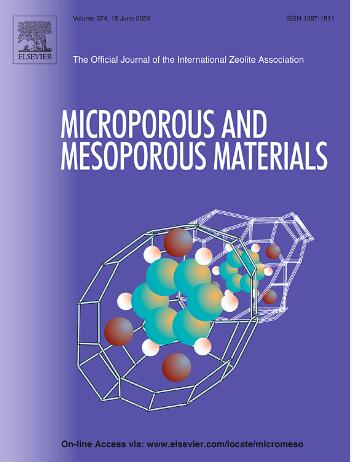Synthesis of hyper-crosslinked porous polymers for drug release
IF 4.8
3区 材料科学
Q1 CHEMISTRY, APPLIED
引用次数: 0
Abstract
This study aimed to synthesize drug-loaded hyper-crosslinked porous polymers (HCPs) under high-temperature, anhydrous, oxygen-free conditions through a Friedel–Crafts reaction. The resulting hyper-crosslinked porous polymers were characterized by infrared spectroscopy, nitrogen adsorption porosity measurements, thermo-gravimetric analysis, field-emission scanning electron microscopy, and powder X-ray diffraction for HCPs, and the electrochemical properties were investigated. The specific surface areas of the hyper-crosslinked porous polymers reached as high as 1079 m2g−1. We next investigated the use of one of the HCP samples as a drug delivery system and demonstrated its ability to release the model drug ibuprofen. Under selected synthesis conditions, the loading efficiency of the HCP with ibuprofen was 35 % (w/w). The release of the drug was also monitored, and 88 % of the loaded drug was released within 12 h. The resulting hyper-crosslinked porous polymer can be used as a matrix for the in vitro loading of ibuprofen.

求助全文
约1分钟内获得全文
求助全文
来源期刊

Microporous and Mesoporous Materials
化学-材料科学:综合
CiteScore
10.70
自引率
5.80%
发文量
649
审稿时长
26 days
期刊介绍:
Microporous and Mesoporous Materials covers novel and significant aspects of porous solids classified as either microporous (pore size up to 2 nm) or mesoporous (pore size 2 to 50 nm). The porosity should have a specific impact on the material properties or application. Typical examples are zeolites and zeolite-like materials, pillared materials, clathrasils and clathrates, carbon molecular sieves, ordered mesoporous materials, organic/inorganic porous hybrid materials, or porous metal oxides. Both natural and synthetic porous materials are within the scope of the journal.
Topics which are particularly of interest include:
All aspects of natural microporous and mesoporous solids
The synthesis of crystalline or amorphous porous materials
The physico-chemical characterization of microporous and mesoporous solids, especially spectroscopic and microscopic
The modification of microporous and mesoporous solids, for example by ion exchange or solid-state reactions
All topics related to diffusion of mobile species in the pores of microporous and mesoporous materials
Adsorption (and other separation techniques) using microporous or mesoporous adsorbents
Catalysis by microporous and mesoporous materials
Host/guest interactions
Theoretical chemistry and modelling of host/guest interactions
All topics related to the application of microporous and mesoporous materials in industrial catalysis, separation technology, environmental protection, electrochemistry, membranes, sensors, optical devices, etc.
文献相关原料
公司名称
产品信息
阿拉丁
Anhydrous aluminum trichloride
 求助内容:
求助内容: 应助结果提醒方式:
应助结果提醒方式:


